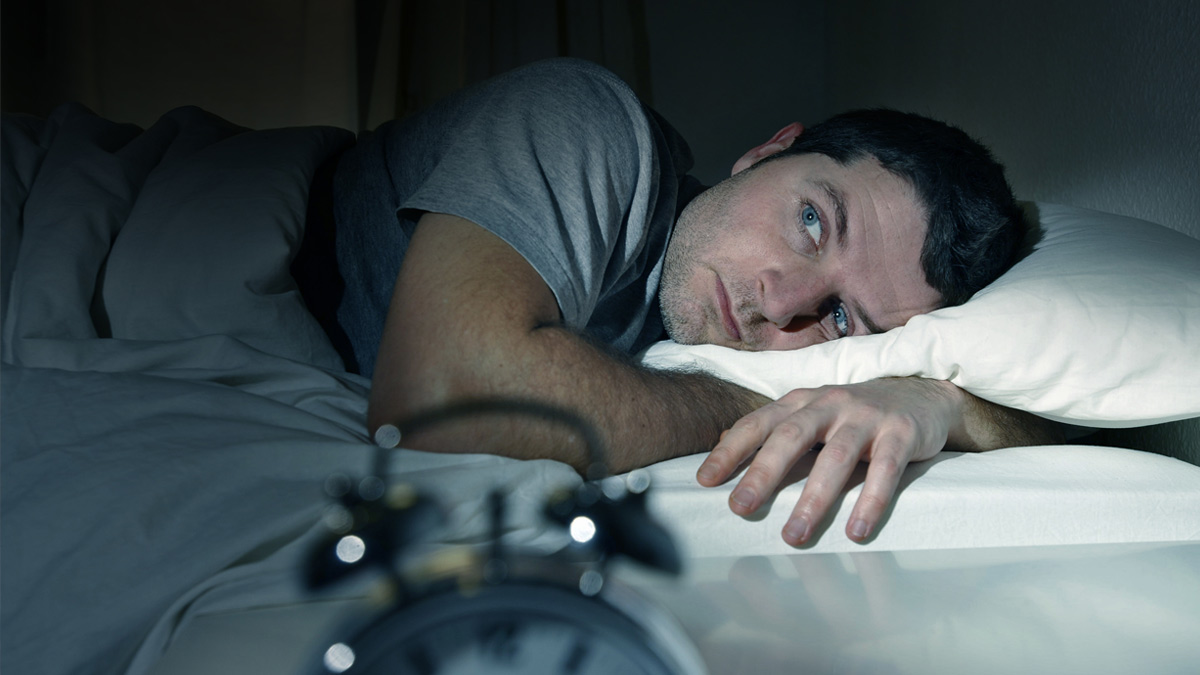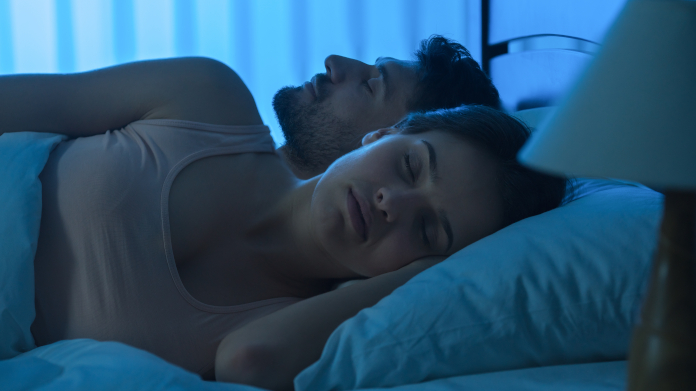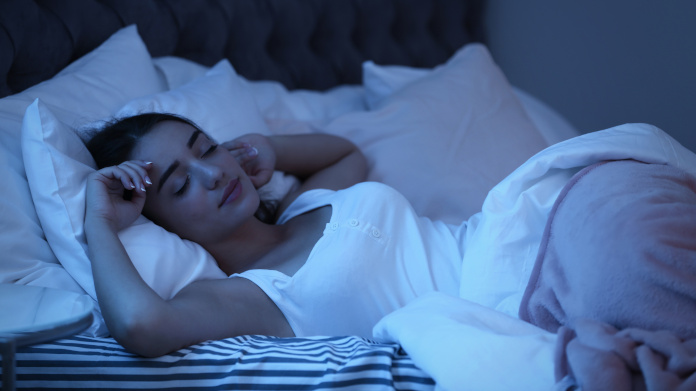3 scenarios where melatonin could help and how to take it in each case
Are you having trouble sleeping? Is it a recurring problem? Melatonin can probably help …

Nature is well-designed. As daylight fades in late afternoon or early evening, the retina sends a signal to the brain which is interpreted correctly as: night is coming and it will soon be the right time to sleep. Immediately, the brain’s neurons get to work. They instantly activate a cascade of reactions which leads to the production of the sleep hormone that regulates our chronobiological rhythms: melatonin.
This molecule, produced from tryptophan in the pineal gland, crosses the blood-brain barrier, reaching the bloodstream within a few seconds where it has a very specific objective: to disseminate the information captured by the retina and encourage the body to slow down and gradually fall asleep. To do this, it presents itself to all the cells with specific receptors able to recognize it, triggering a range of relaxing actions. The effects are rapid, especially after 7pm when these melatonin receptors are more sensitive (1). If everything goes as it should, a person will start to experience the signs of fatigue triggered by the melatonin - repeated yawning, gradual drowsiness - until they sensibly decide it’s time to get to bed for a good night’s sleep. Melatonin production continues throughout the hours of darkness, before gradually decreasing and then ceasing altogether at around 6.00 am, with the break of day actually having nothing to do with it. In this way, the body produces between 10µg and 80µg of melatonin every night. That is, when everything goes according to plan.
Let’s now imagine that a person is deprived of all light sources for several days. What would happen? Would their body still produce melatonin if their retina was unable to send the required information? Would they still sleep normally? An experiment, conducted back in 1962, provides the answers to these questions. Michel Siffre, a French speleologist (cave expert) spent two months in a subterranean glacier in the south of France, away from light and time cues. Using a clever one-way communication system, he was able to inform his research team above, what time he got up, ate, and went to bed, without receiving any information in return. When he emerged on 17 September 1962, he was in good health, but mistakenly believed the date to be 20 August. With no light reference, his body had initiated an internal clock, capable of functioning independently of external events and signals, which maintained a wake/sleep cycle but which turned out to be very imprecise. It subsequently became apparent that this internal clock was generating average cycles of 25 hours – one hour more than the 24-hour cycle dictated by the environment. While the difference was small, it was enough to convert human daytime activity into night-time activity within just three weeks!
Light and melatonin production are thus essential for ensuring a regular timetable for going to bed and getting up. They enable the body to synchronise its internal clock with the changeover from day to night. Thanks to this synchronisation, we humans remain ‘adapted’ throughout life to regular schedules aligned to our environment. We get tired at the right time – at the beginning of the evening – and we’re in ‘top form’ when we need to be, in the morning, a few hours after daybreak. Unfortunately however, this endogenous melatonin production, while essential for normal, restorative sleep, often gets disrupted in today’s modern societies …
Delayed phase syndrome: a very common sleep problem
As explained, the retina plays a key role in the production of melatonin. It signals to the body that night is falling and that it’s time to get ready to sleep. But what happens when a person spends the whole evening glued to their TV or computer screen, both of which emit powerful light rays with peak emission at 460nm (blue light)? Quite simply, the retina is fooled and fails to signal to the brain that night is approaching. There’s a consequent delay in the secretion of melatonin and the individual finds it hard to fall asleep. When they decide to go to bed, often later than they should because they have not experienced the signs of fatigue, there’s too little melatonin circulating in their body to encourage the onset of sleep. They have to wait a good twenty minutes, sometimes more, to finally relax under melatonin’s effects, and gradually move into a state of sleep.
And that’s not the end of it! It’s not just the ability to fall asleep that’s affected by screen-emitted light rays: in triggering the secretion of melatonin some hours after the appropriate time, they correspondingly postpone peak melatonin production by the same period, which as a result, occurs at precisely the wrong time: daybreak! In fact, the length of time during which melatonin is produced remains relatively stable, so if production starts later, it’s going to finish later too. When the alarm clock goes off at 6.30am, the levels of melatonin circulating in the body are still too high because of the delay in the start of its secretion. The consequences of this are all too familiar to millions of people: fatigue, craving more sleep, feeling drowsy in the morning … If it keeps happening, sleep problems become chronic. This is called delayed sleep phase syndrome. It’s very common among people under 30 (adolescents and young adults), but is growing at an alarming rate among all sections of the population due to the recent trend towards late-night viewing of TV series and the growing popularity of smartphones.
Exogenous melatonin – taken in the form of a capsule or spray – offers a natural solution to this widespread problem. ‘Natural’ because it is in every way identical to the melatonin produced by the body. The idea is to use this external source to fool the body. Highly bioavailable, exogenous melatonin reaches the blood vessels and behaves exactly like its endogenous counterpart, triggering various sedative actions. This produces a virtuous circle: the body understands it has to move into sleep mode, and this triggers the production of endogenous melatonin – essential for maintaining sleep throughout the night – without waiting for a signal from the retina or taking account of recent sleep phases.
What does the scientific research say about it?
Nothing but good things! In 2010, a meta-analysis examined the results of nine trials on delayed sleep phase syndrome: all of them showed that oral administration of melatonin enabled the triggering of endogenous melatonin secretion to be brought forward by just over an hour, and the onset of sleep by over half an hour. Taking melatonin reduced sleep latency by more than 20 minutes with no significant changes to wake-up time or total sleep duration (2). For those suffering from insomnia, a decrease such as this is a godsend!
What’s the protocol?
Take 2-3mg of immediate-release melatonin (that’s 2-3 tablets of Melatonin 1 mg) around five hours before you normally go to sleep – for example, at 9.00pm if you usually go to sleep at 2.00am.
This protocol should be continued for a month, while maintaining standard sleep hygiene measures.
Insomnia and frequent waking in the night
Turning your pillow over. Tossing and turning every 10 minutes. Staring at the ceiling. Night-time insomnia is particularly challenging. It’s very common among the over-65s; indeed half of all people in this age bracket are thought to experience it on a regular basis, particularly in the early hours of the morning.
Chronic stress and anxiety are sometimes to blame, but more often than not, it’s due to age-related changes in ‘sleep architecture’. Tests have shown that with age, the ‘light sleep’ phase gradually increases, while the ‘deep sleep’ and REM phases decrease. And of course, it’s precisely during the light sleep phase that we wake up more easily: all it takes is the slightest noise, a sudden movement by your partner, a mild thirst or non-urgent need for the loo, and over time, this can manifest as chronically-fragmented sleep.
This kind of night waking perpetuates a vicious circle. Frustrated by the situation, we tend to get up, turn on the light, look at our phone. But this is a mistake: night-time illumination, even for just a few seconds, abruptly interrupts melatonin production, especially when it happens between the hours of 2am and 4am. Secretion may of course resume, but its end-time will have shifted, which in turn leads to daytime fatigue.
In actual fact, we know one of the reasons for this decline in sleep among those over 65. As we get older, the pineal gland responsible for producing melatonin calcifies, thus reducing the amount of sleep hormone secreted (3). One possible solution is to take delayed-release melatonin. In fact, people in this age group don’t find it difficult to fall asleep (indeed they tend to do so quickly), but to stay asleep till morning. For that to happen, melatonin needs to be produced continuously, since its half-life in the body is relatively short (30-60 minutes) (4).
Delayed-release supplements are therefore better because they mimic the continuous production of endogenous melatonin and help ensure stable concentrations over a longer period (5).
What does the scientific research say about it?
In 2001, a study of over-50s showed for the first time that restoring plasma melatonin to normal levels, through oral melatonin supplementation, was able to significantly improve sleep in those suffering from age-associated insomnia, without changing sleep architecture (6).
What’s the protocol?
Take 3-6mg of melatonin (older individuals may absorb orally-administered melatonin only half as well as younger people), that’s 1-2 capsules of Melatonin 3 mg Timed Release 15 minutes before bed. This can be combined with a daily session of 1-2 hours of light therapy in late afternoon, for a period of one month.
Jet-lag syndrome: a problem for the long-haul traveller
This is the collective term for all those sleep issues related to flying across several time zones. These problems are easy to understand: the traveller’s biological clock is synchronised with the time zone at their point of departure. When they land at their destination, the environmental signals and social constraints are no longer ‘in synch’ with this clock, resulting in the production of melatonin at inappropriate times, and inadequate ‘time-to-sleep cues’. Generally speaking, the traveller’s sleep will be largely unaffected the day after the flight, but will deteriorate thereafter. For the following five to six days, sleep is often badly disrupted during the latter half of the night.
Exogenous melatonin is an excellent antidote to this modern problem. It rapidly enables the melatonin production phase to be either advanced or delayed, thus reducing both the symptoms and duration of the syndrome.
What does the scientific research say about it?
According to a 2002 review of 9 placebo-controlled clinical trials, melatonin is safe and effective for preventing or reducing the effects of jet lag2. The review concluded that this efficacy is greater when travelling eastwards, and moving through five or more time zones. The authors emphasise the importance of taking melatonin at the right time; failure to do so may exacerbate the effects of jet lag.
In 2009, a review of 14 clinical trials reached a similar conclusion: melatonin is beneficial for preventing and reducing the effects of jet lag (7). The authors of this review went so far as to establish protocols for each direction of travel (east and west).
Protocol for travelling east
In the days leading up to departure: get up earlier, try to get as much exposure to daylight as possible, sleep well, and take 1-2mg of melatonin 15 minutes before bed.
The day of departure: take 2-3mg of melatonin at a time based on the following calculation: 10pm minus the number of time zones you’ll be crossing. Never take it before 3pm as this may delay the phase.
On arrival: take melatonin 15 minutes before bed, for five consecutive days. Get up in the morning and spend at least 30 minutes being active outdoors.
Protocol for travelling west
In the days leading up to departure: go to bed later, make sure you’re exposed to daylight and sleep well.
The day of departure: take 1mg of melatonin when you get up.
On arrival: take 2-3mg of melatonin towards 10pm for five consecutive days.
Normally, it can take more than a week to get over the symptoms of jet lag, but these protocols can reduce this to less than 3 days.
5 good reasons to try melatonin
- The keen interest in melatonin comes from the fact that supplementing with an exogenous source of the molecule does not disrupt its endogenous production: there is no negative feedback as is often the case in endocrinology (the study of hormones).
- We all know that the psychotropic medication widely-prescribed for insomnia (benzodiazepines and related drugs) causes unwelcome side-effects (drowsiness, loss of alertness …). With melatonin, you feel normal in the morning – there are no lasting effects, and there is no record of any adverse side-effects. There is equally no risk of withdrawal symptoms when you stop taking it, nor any risk of ‘rebound insomnia’ as can happen with sleeping tablets, nor any tolerance or dependency phenomena. (8).
- Unlike benzodiazepines, melatonin does not increase the risk of memory problems. On the contrary, it has a protective effect against neurodegenerative diseases (it is actually a remarkable antioxidant that exists in both aqueous and lipid environments) (9).
- Melatonin can also be used to regulate temporary shifts in phase, particularly those related to ‘weekend excesses’. Many of us will have had difficulty getting to sleep on a Sunday or Monday night after going to bed unusually late on Saturday.
- Melatonin can be happily combined with other natural compounds that reduce stress (passiflora, valerian), or pain, two factors that adversely affect the quality and quantity of our sleep.
10 principles to abide by when taking melatonin
- Establish a daily routine with regular times for going to bed and getting up (even at the weekend).
- Keep to the amount of sleep appropriate for your age and needs.
- When going to sleep, make sure your room is dark, quiet and not too warm (the ideal temperature is 18°-20° C).
- Don’t go to bed hungry or thirsty.
- Avoid having long naps (more than an hour) or taking them too late in the day (after 4pm).
- Ban television, computers and smartphones after 7pm, as well as caffeine, alcohol and cigarettes (the aromatic polycyclic hydrocarbons in tobacco reduce the bioavailability of exogenous melatonin).
- Restrict intense mental stimulation after 8pm, and read instead (10).
- Take some exercise during the day, but not after 6pm.
- If you’re experiencing no effects from the melatonin, gradually increase the dose but don’t exceed 6mg. Some people simply don’t respond to melatonin and for them, increasing the dose will not produce any additional effect.
- As a precaution, do not take melatonin if you are pregnant or have a serious disease (auto-immune, leukemia, lymphoma, ovarian cancer, psychiatric disorder) without seeking medical advice.
If you’ve been suffering with sleep problems for a long time, you could also keep a sleep journal, noting down each day the time you went to bed and got up, how long you think it took to fall asleep, the number of times you woke in the night, your estimated sleep duration, the quality of your sleep, any naps taken, and how you felt during the day.
References
- Van den Heuvel CJ, Ferguson SA, Macchi MM, Dawson D. Melatonin as a hypnotic: con. Sleep Med Rev. févr 2005;9(1):71‑80.
- van Geijlswijk IM, Korzilius HPLM, Smits MG. The Use of Exogenous Melatonin in Delayed Sleep Phase Disorder: A Meta-analysis. Sleep. 1 déc 2010;33(12):1605‑14.
- Claustrat B, Leston J. Melatonin: Physiological effects in humans. Neurochirurgie. avr 2015;61(2–3):77‑84.
- Claustrat B. Mélatonine et troubles du rythme veille-sommeil. Médecine Sommeil. janv 2009;6(1):12‑24.
- Van den Heuvel CJ, Ferguson SA, Macchi MM, Dawson D. Melatonin as a hypnotic: con. Sleep Med Rev. févr 2005;9(1):71‑80.
- Wirz-Justicel AW-J and SMA, Maxwell Armstro S. Melationin: Nature’s Soporific? J Sleep Res. 1 juin 1996;5(2):137‑41.
- Melatonin and its relevance to jet lag. Brown GM, Pandi-Perumal SR, et al. Travel Med Infect Dis. 2009 Mar;7(2):69-81. Review.
- Stone KL, Ensrud KE, Ancoli-Israel S. Sleep, insomnia and falls in elderly patients. Sleep Med. sept 2008;9, Supplement 1:S18‑22.
- Arnulf I. Sleep: what the day owes the night. Lancet Neurol. Janv 2015;14(1):19‑20.
- Cummings C. La mélatonine pour traiter les troubles du sommeil chez les enfants et les adolescents. Paediatr Child Health. 2012;17(6):334‑6.
Keywords
6 Hours
Ordering was easy and the product was…
Ordering was easy and the product was delivered with no problems. Appreciated that I was notified when it would arrive. Thanks!
MascarC
5 Days
Great customer service - responsive …
I ordered from them and my item was unavailable for sometime. I was super happy when they reactivated my order and shipped my item which arrived very quickly. Great customer service.
Ruth Rueter
6 Days
Super fast shipping
Super fast shipping
Donald Borling
9 Days
Reputable companysearch and the number of…
The research and the number of selection of products.
NAKHJAVAN Shervin
22 Days
The Anti Aromatase is a great product
The Anti Aromatase is a great product. You just need to have constant inventory. Recently this product has been out of stock.
GEORGE Verne
24 Days
Great help on chat
Great help on chat. Knowledgeable and friendly.
Jason Argos
27 Days
Customer service was fast and friendly.
Customer service helped to stop the transaction process of the subscription. I appreciated that.
Greenie
28 Days
I order here due to the high quality of…
I order here due to the high quality of the products and the quick delivery of items - thank you
Barbara J
29 Days
SuperSmart's Eye Pressure supplements: highly recommended!
I purchase SuperSmart's Eye Pressure supplements regularly for over 5 years, and gotta say they are truly a wonderful product for my Glaucoma. Highly recommended if you have eye pain from your Glaucoma.
D. Martinez
34 Days
Quick service
Quick service
MONELL
34 Days
Speedy service.
Speedy service.
ROSENTHAL Marvin
38 Days
Clear website- Efficient
Clear website. Excellent search engine and fast delivery!
Mohamad Hussein
41 Days
They have great products.
They have great products.
Vickie
41 Days
Great Shipping Time!
You Have A Great Shipping Time! Praise The Lord!
DMHoge
43 Days
Doctor Recommended!
Good pricing, very good availability, doctor recommended (couldn't find what I needed anywhere else), and it took only a week to arrive (which I can't complain about).
Al





